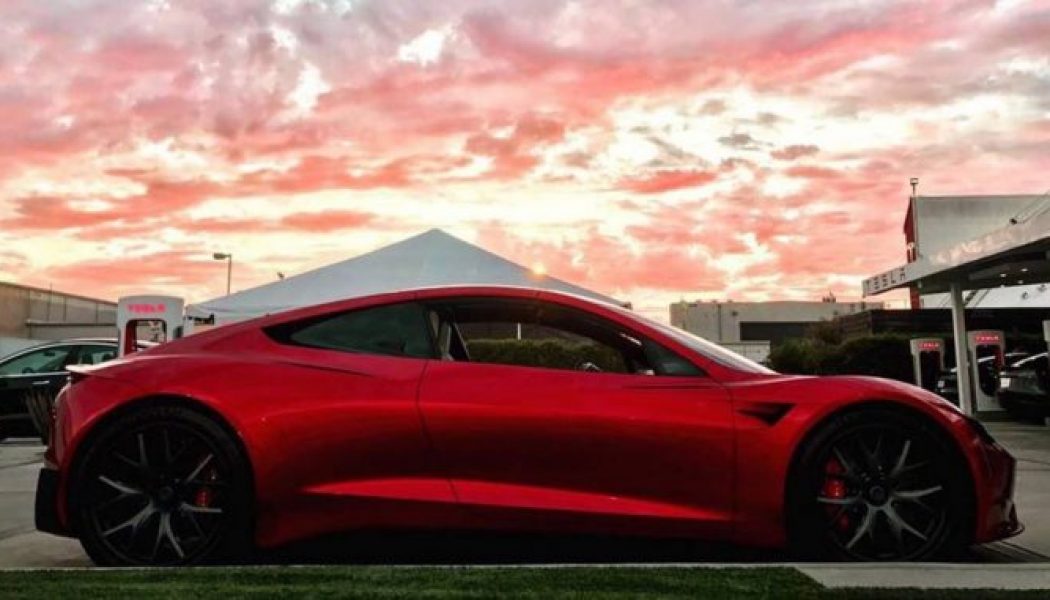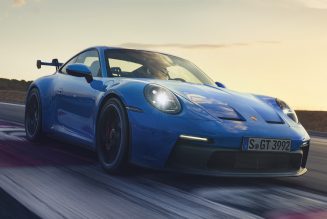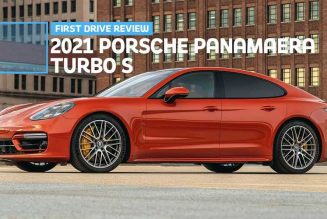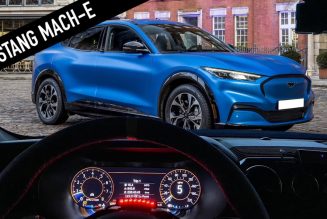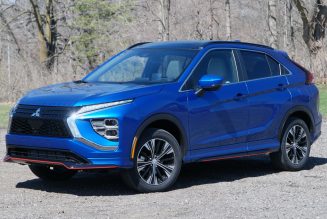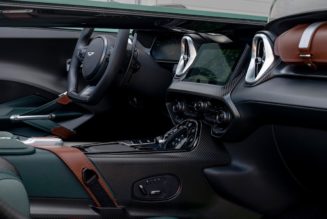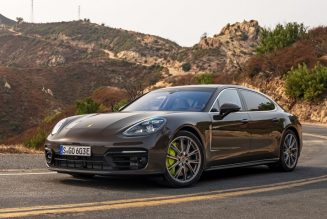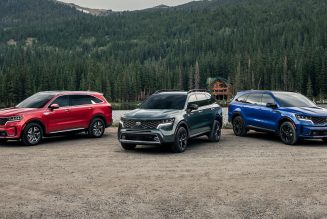The 2021 Ferrari Roma is an emphatic celebration of the Italian gran turismo, a genre that in the 1950s and ’60s resulted in some of the most beautiful and desirable cars ever built in Maranello. But the Roma is not a carefully crafted homage to the past, a contrived pastiche of retro-whimsy wrapped around 21st century hardware. No, this Ferrari GT is in every way a thoroughly modern interpretation of a classic automotive concept, cleverly engineered and superbly executed.
First things first: The Roma is not a replacement for the Portofino, Ferrari’s other V-8-powered front-engine GT. It is an addition to the lineup, and with a price tag of $222,620 it’s by a fraction the least expensive new Ferrari you can buy. In the rarified world of Ferrari-nomics, it’s a stone-cold bargain.
Inside, the Roma shares the Human Machine Interface (HMI) concept first seen in the SF90, with a curved 16-inch high-def instrument panel screen and steering wheel with capacitive touch control switches in the horizontal spokes. Additional touch control switches for lights and exterior mirror adjustment are located in a pod to the right of the steering wheel, and like the SF90, the transmission is controlled by switches arranged in a housing on the center console that recalls the iconic Ferrari metal shiftgate. Unlike the SF90, however, the Roma offers an 8.4-inch, portrait-format touchscreen mounted high between the central flying buttresses that extend from the floor to the dash. And, as in cars like the GTC4Lusso, an 8.8-inch screen located on the passenger side of the dash is available as an option.
The Ferrari Roma’s Clean, Classic Shape Nods to the Future
Photographs don’t do the Ferrari Roma justice. In the metal, Ferrari’s new GT—designed in-house under the direction of Flavio Manzoni—looks wider and lower and much more dramatic, the traditional cab-rearward proportions and sensual surfaces of the upper body playing off edgily modern front and rear graphics. Slim headlights and a substantial splitter give the Roma’s snout a sharklike menace. What you can’t see are the race-car-style vortex generators on the underfloor at the front of the car that help the Roma generate more downforce on the front axle than the Portofino.
The body-colored grille, insouciantly described by Ferrari as holes drilled into a sculpture, is the most controversial part of the exterior, and deliberately so, says Ferrari’s head of GT cars exterior design, Andrea Militello. “The idea was the car has such a clean and classic shape, it needed design elements to show the future and modern technology,” he said. “A conventional grille with chrome wouldn’t have been right.” The sharply undercut rear panel is a modern riff on the chopped Kamm tail seen on ’60s Ferraris like the legendary 250 GTO, and the Roma is the first Ferrari since the cantankerous 348 not to have round taillights.
Design chief Manzoni’s desire to keep the Roma’s tail low required the development of an active spoiler that sits just below the rear window. The spoiler has three settings: Low Drag, Medium Downforce, and High Downforce. In the Low Drag setting, the spoiler sits flush with the rear window. In High Downforce mode, it’s deployed at a 135-degree angle to the rear window, generating 209 pounds of downforce on the rear axle at 155 mph, with just a 4 percent increase in drag. In the mid setting, the spoiler develops about 30 percent of maximum downforce with a mere 1 percent increase in drag. The spoiler’s activation thresholds are determined by vehicle speed and the manettino setting.
The Ferrari Roma Has a 612-hp, 3.9-Liter Twin-Turbo V-8
There is no start button in the Ferrari Roma—you simply touch the logo on the steering wheel boss as if you were opening an app on your smartphone, and the car wakes up. Touch it once more, and the engine snarls into life. Touch switches on the steering wheel toggle between instrument panel configurations. The standard display has, as is traditional with Ferraris, a large tachometer front and center, flanked on the left and right by navigation and audio screens and detailed vehicle information. Touch the View Max logo, and you can have a full-screen map instead, or a giant race-car-style tach arching across the center of the screen, with a g-meter on the right-hand side.
In Roma spec, the 3.9-liter twin-turbo V-8 makes 612 hp—21 more horses than in the Portofino. The extra power comes from revised cam profiles and new sensors in the turbocharger housings that more accurately monitor the turbines’ revs and allow them to spin 5,000 rpm higher than before. The power increase comes despite the fitment of power-sapping gasoline particulate filters in the redesigned exhaust system. Maximum torque of 561 lb-ft is the same as in the Portofino and is also available from just 3,000 rpm, but because of the engine tweaks the torque peak hangs on 500 rpm longer, to 5,750 rpm.
The new eight-speed dual-clutch transmission is more compact and 13.2 pounds lighter than the seven-speed unit in the Portofino. The clutch module is 20 percent smaller but can handle 35 percent more torque. The ratios are different from those used in the SF90 version, and it has a reverse gear (the hybrid SF90 uses its e-motors to reverse the car). A more powerful electronic control unit means significantly quicker shift times.
Left to its own devices the new transmission is alert yet smooth. In Comfort mode the transmission upshifts early, slipping into eighth gear as low as 45 mph on part throttle to help reduce fuel consumption. But squeeze your right foot, and it quickly drops back a few gears when you need a burst of acceleration. And although it boasts a specific output of 157 hp-per-liter, the twin-turbo V-8 is anything but highly strung, happy to trickle about town turning little more than 1,200 rpm.
Although it shares its 105.1-inch wheelbase with the Portofino, the Roma is 2.8 inches longer, 1.4 inches wider, 0.7 inch lower, and—crucially—weighs a claimed 227 pounds less. The Roma’s rear spring rates are thus 10 percent softer, and its wider track and lower center of gravity mean the roll rate is 10 percent lower. Although the Roma initially feels more buttoned down than, say, an Aston Martin DB11 V8, after a few miles you’ll notice a subtle fluency to the ride you don’t get in the Portofino. The ride quality and the tall gearing give the Roma the relaxed, long-legged gait that defines all great GT cars; this is a Ferrari in which you’d happily put away 1,000 miles in a single day.
But here’s what makes the Roma truly special: It’s a proper GT, but it’s also supercar quick in the twisty bits.
So How Does the Ferrari Roma Drive?
There’s no Jekyll-and-Hyde transformation from cruiser to crusher when you twist the manettino to Sport or even Race mode: The Roma’s back road pace and poise is fundamentally baked into the hardware. That V-8 under the hood might be turbocharged, but it responds to throttle inputs with the precision of a naturally aspirated engine, zinging effortlessly to its 7,500-rpm redline. It’s wonderfully smooth and tractable below 2,000 rpm and explosively epic from 5,000 rpm up, but the transition between the two states is superbly linear.
The dual-clutch transmission responds instantly to commands from the paddles, and the brakes to the pedal, which has shorter travel and a higher modulation rate than the Portofino setup. The steering is quick, response building rapidly the moment you pull the wheel off-center, but the implacable authority of the front axle means the Roma goes exactly where you point it, and the nose stays exactly where you want it even as you get into the power and the e-diff and traction control systems funnel maximum torque through the rear tires. The Ferrari Roma might be designed to cross continents, soft bags in the trunk and jackets tossed in the rear seats. But its sheer pace and unflappable poise on a demanding road will thrill and amaze you. No other GT—Aston Martin DB11, Bentley Continental—comes close to having the calm precision of this Ferrari.
The wizard behind the curtain is Ferrari’s brilliant Side Slip Control 6.0 system, which brings all the Roma’s onboard dynamic control systems under the watchful eye of an algorithm designed to maximize driver enjoyment. The beauty of the system is that it works with you as a driver, helping you achieve what you want to achieve rather than digitally rapping you over the knuckles when you do something wrong. It’s utterly seamless and unintrusive and can be tailored to suit road conditions and your talent level.
As mentioned, the Roma is the first Ferrari GT with Race mode. Among other things, Race mode enables the Ferrari Dynamic Enhancer, a lateral dynamic control system that gently adjusts the brake pressure on individual wheels to balance the car as the limits of adhesion are breached. It’s not a stability control system per se, Ferrari dynamics guru Stefano Varisco insists, but it’s designed to “flank” traditional stability control parameters to make the Roma feel more predictable once the rear tires run out of grip. In other words, it’ll help you drift the Roma like a boss.
Of course, if you’re talented enough—and have the room to play—you can switch everything off.
A Fast, Glamorous GT in the Italian Tradition
The Roma is not perfect. The exhaust note is perhaps a touch too intrusive in a steady-state cruise. The plastic design feature that wraps around the instrument panel binnacle causes notable reflections in the windshield if the sun is in the wrong place. You can occasionally hear the eight-speed transmission thunk between ratios when you lift off at low speeds on a light throttle. And the reliance on touchscreens means you have to hunt and peck around the menus to set up things like the climate control until you get used to it. But in terms of niggles, that’s about it.
The 2021 Ferrari Roma is a fast and glamorous GT, thoroughly engaging to drive, whether it be mooching down to the coffee shop or charging up a mountain pass. But it’s also a Ferrari you can genuinely use every day, with all the comfort and connectivity you need and a factory seven-year maintenance program included in the price. And while we’re talking price, remember also that the Roma coupe costs fractionally less than the Portofino convertible and is a far better car all around. Sure, the Roma is, for most of us, an eye-wateringly expensive ride. But as a Ferrari, it’s a bargain.
| 2021 Ferrari Roma | |
| PRICE | $222,620 |
| LAYOUT | Front-engine, RWD, 2-pass, 2-door hatchback |
| ENGINE | 3.9L/612-hp/561-lb-ft turbo DOHC 24-valve V-8 |
| TRANSMISSION | 8-speed twin-clutch auto |
| CURB WEIGHT | 3,450 lb (mfr) |
| WHEELBASE | 105.1 in |
| L x W x H | 183.3 x 77.7 x 51.2 in |
| 0-62 MPH | 3.4sec (mfr est) |
| EPA FUEL ECON | Not yet tested |
| ON SALE | Late 2020 |
